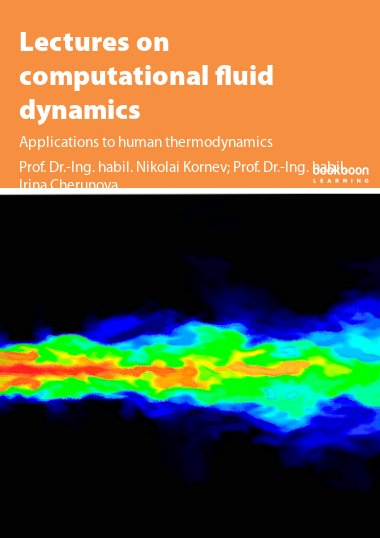This book is written to introduce the basics of computational fluid dynamics including turbulence modelling. The book contains three parts: basic computational fluid dynamics (CFD), turbulence modelling and application of CFD to some selected problems of human thermodynamics. The idea of the first part is to describe different numerical methods and algorithms in a simple manner and to enable the readers to write their first CFD programs. The aim of the second part is to cover fundamental aspects of turbulence modelling starting from the physics and principles of the statistical description of turbulence. A short introduction to basic CFD models based on Reynolds averaging and Large Eddy Simulation is given in a clear and simple form. The last part of the book is devoted to the application of CFD to various problems connected to interaction between human body and surrounding medium. The book can be used for lecture courses on CFD, turbulence modelling and applied human thermodynamics.

Description
Content
- Main equations of the Computational Heat and Mass Transfer
- Fluid mechanics equations
- Heat conduction equation
- Finite difference method
- One dimensional case
- Two dimensional case
- Time derivatives. Explicit versus implicit
- Exercises
- Stability and artificial viscosity of numerical methods
- Artificial viscosity
- Stability. Courant Friedrich Levy criterion (CFL)
- Exercise
- Simple explicit time advance scheme for solution of the Navier Stokes Equation
- Theory
- Mixed schemes
- Staggered grid
- Approximation of...
- Approximation of...
- Calculation of the r.h.s. for the Poisson equation (4.6)
- Solution of the Poisson equation (4.6)
- Update the velocity field
- Boundary conditions for the velocities
- Calculation of the vorticity
- Splitting schemes for solution of multidimensional problems
- Splitting in spatial directions. Alternating direction implicit (ADI) approach
- Splitting according to physical processes. Fractional step methods
- Increase of the accuracy of time derivatives approximation using the Lax-Wendroff scheme
- Finite Volume Method
- Transformation of the Navier-Stokes Equations in the Finite Volume Method
- Sample
- Explicit scheme
- Implicit scheme
- Iterative procedure for implicit scheme
- Pressure correction method
- SIMPLE method
- Overview of pressure correction methods
- SIMPLE algorithm
- PISO algorithm
- SIMPLEC algorithm
- Computational grids
- Grid types
- Overset or Chimera grids
- Morphing grids
- Physics of turbulence
- Definition of the turbulence
- Vortex dynamics
- Experimental observations
- Basic definitions of the statistical theory of turbulence
- Reynolds averaging
- Isotropic and homogeneous turbulence
- Correlation function. Integral length
- Structure functions
- Kolmogorov theory K41
- Physical background
- Dissipation rate
- Kolmogorov hypotheses
- Three different scale ranges of turbulent flow
- Classification of methods for calculation of turbulent flows
- Limitation of K-41. Kolmogorov theory K-62
- Reynolds Averaged Navier Stokes Equation (RANS)
- Reynolds Stress Model (RSM)
- Derivation of the RSMEquations
- Equations of the k - " Model
- Derivation of the k-Equation
- Derivation of the " -Equation
- Method of wall functions
- Large Eddy Simulation (LES)
- LES filtering
- LES equations
- Smagorinskymodel
- Model of Germano ( Dynamic Smagorinsky Model)
- Scale similarity models
- Mixed similarity models
- A-posteriori and a-priori tests
- Hybrid URANS-LES methods
- Introduction
- Detached Eddy Simulation (DES)
- Hybrid model based on integral length as parameter switching between LES and URANS
- Estimations of the resolution necessary for a pure LES on the example of ship flow
- Mathematical model of the ice protection of a human body at high temperatures of surrounding medium
- Designations
- Introduction
- Human body and ice protectionmodels
- Mathematicalmodel
- Results
- Discussion
- CFD Design of cloth for protection of divers at low temperatures under current conditions
- CFD application for design of cloth for protection from low temperatures under wind conditions. Influence of the wind on the cloth deformation and heat transfer from the body
- Wind tunnel measurements of pressure distribution
- Numerical simulations of pressure distribution and comparison with measurements
- Comparison of CFD results withmeasurements
- Change of thermal conductivity caused by wind induced pressures
- Simulation of human comfort conditions in car cabins